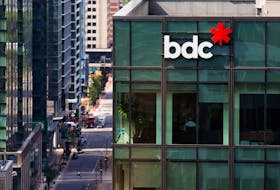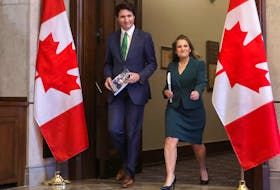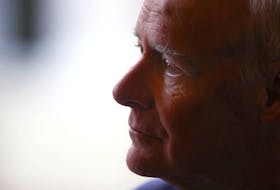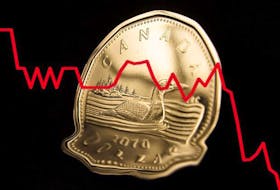When the Ottawa Senators contest their home opener Friday against the Toronto Maple Leafs, it will mark the start of a 56-game schedule guaranteed to lose the team a small fortune.
And that will come hard on the heels of a money-losing 2020. The Senators finished last in the National Hockey League in attendance last season, averaging just 12,600 fans per home game. The team also failed to make the playoffs for the third year running.
After the COVID-19 virus cut short the Senators’ regular 82-game season by 11 games last March, team revenues slumped US$12 million to US$115 million (fiscal year ended June 30), transforming a small operating profit into a $2.9-million loss, according to Forbes Magazine.
That will seem like a boom compared to this year. Without fans in their 18,652-seat arena, the Senators are staring at an even deeper collapse in revenues. At the same time, the team is also faced with significant expenses, mainly in the form of players’ salaries and travel costs that simply can’t be avoided.
Yet, oddly, Senators owner Eugene Melnyk pronounced himself “thrilled” after the NHL confirmed last month it would launch the new season. He remains optimistic he can absorb tens of millions of dollars in financial losses while maintaining full control of the team.
Melnyk, who declined comment for this story, just may do it.
Consider first the various streams of revenue the Senators rely on and how these might be affected in the coming year.
In 2019, the last normal year, the Senators generated US$127 million in total revenues, with the biggest shares coming from broadcast rights (roughly 33 per cent of revenues, including national and local deals), about 25 per cent each from ticket sales and arena revenues (concessions, parking and naming rights), 12 to 15 per cent from the NHL’s revenue-sharing pool and the remainder from hosting non-NHL events.
In all, based on interviews with hockey industry experts and public securities filings, the Senators will do very well to top US$60 million this year in revenues, most of it from broadcast rights.
Here’s how it could play out: Because it’s a shorter season, revenues from broadcasting Senators games will drop by anywhere between 33 per cent and 24 per cent, depending on the number of playoff matches. That’s a potential loss of US$14 million to US$10 million.
The loss of ticket sales is more problematic. While Melnyk remains hopeful he will be able to put 6,000 fans into the Canadian Tire Centre later in the season, it remains just that: a hope. If fans are shut out of the arena for the full season, that’s a loss of US$25 million to US$30 million in revenues.
The team should be able to generate some revenues from naming rights for the Canadian Tire Centre and signage inside the rink, but parking and concession revenues will drop to near zero, as will sales associated with concerts and other non-hockey events. Potential revenue losses: at least US$25 million.
That leaves revenue sharing from the NHL. Under a complicated formula, the league targets 6.05 per cent of its hockey-related revenues for redistribution to lower-cost teams. The pool is created in part by assessing a levy against the 10 teams with the highest revenues. It is topped up with gate receipts from playoff games and, if necessary, a portion of NHL media revenues.
In fiscal 2019, the revenue-sharing pool likely topped US$300 million, from which the Senators received an estimated US$12 million to US$13 million.
But this year the size of the revenue sharing fund will plummet to little more than US$110 million, which means the amount going to the Senators will drop by at least US$7 million.
All told, the team could suffer a revenue shortfall this year of US$60 million plus and perhaps closer to US$70 million.
Set against this are reduced expenses for the team, perhaps US$30 million plus. Staff levels are down significantly, particularly those associated with operations, administration and marketing.
However, the lion’s share of expenses in the operation has always been players’ compensation, or about half the total. Costs associated with travel, hotels and hockey operations staff take up a significant chunk of the budget as well.
Since total revenues for the league are expected to drop to little more than US$1.8 billion this year (assuming no in-person attendance) from an estimated US$4.4 billion in fiscal 2020, the NHL Players’ Association last summer signed a multi-year extension to the collective agreement, giving team owners some financial relief.
Under the deal, which could yet be amended, NHL player salaries will be reduced by 20 per cent, with that amount parked in an escrow account — to be returned at a future date if player salaries make up less than 50 per cent of NHL revenues. The players also agreed to defer another 10 per cent of their salaries.
For now, the owners must contribute the cash into escrow. But, given how unlikely it is that league revenues will return swiftly to more normal levels, there is a very good chance the players will never see this money.
Now consider how this plays out for Melnyk. The NHL estimates the Senators’ hockey payroll this year at little more than US$62 million. That’s already US$10 million below 2019 levels. Not only that, but Melnyk will also likely save another US$12 million in players’ salaries thanks to the agreement on escrow.
Combined with savings from the Senators’ reduced administration, cost savings could top US$30 million, leaving a gap of approximately US$30 million compared to revenues, perhaps more, for Melnyk to close.
Melnyk is not without financial resources. While Forbes Magazine reckoned last month that the Senators franchise was worth US$430 million, Melnyk told the Financial Post last October his team had been valued at US$600 million. Set against this is some US$200 million in debt. While lenders in this business generally don’t like advancing funds that exceed 50 per cent of appraised value, Melnyk has some wiggle room here to raise more debt.
It is also possible the NHL will do a private financing secured against league assets and encourage weaker teams to borrow from it at favourable terms. The league has done this sort of transaction in the past. However, it’s not clear the NHL has sufficient additional assets to organize such a borrowing.
Larger operations, such as MSG Sports — owner of the New York Rangers and the New York Knicks, a National Basketball Association franchise — likely won’t need to take advantage. MSG last November completed a major refinancing that left the Rangers with US$100 million in borrowing capacity, should it be necessary.
Melnyk will be able to look forward to his share of the US$650 million franchise fee to be paid later this year by the Seattle Kraken, an expansion franchise that is expected to begin play in the NHL this autumn. Melnyk’s split, to be received later this spring or summer, will be US$21 million.
So, yes, the losses facing Melnyk, the Senators, staff and players are all very real, but there appears a way out as long as some semblance of normality begins to return, along with fans.
Copyright Postmedia Network Inc., 2021







